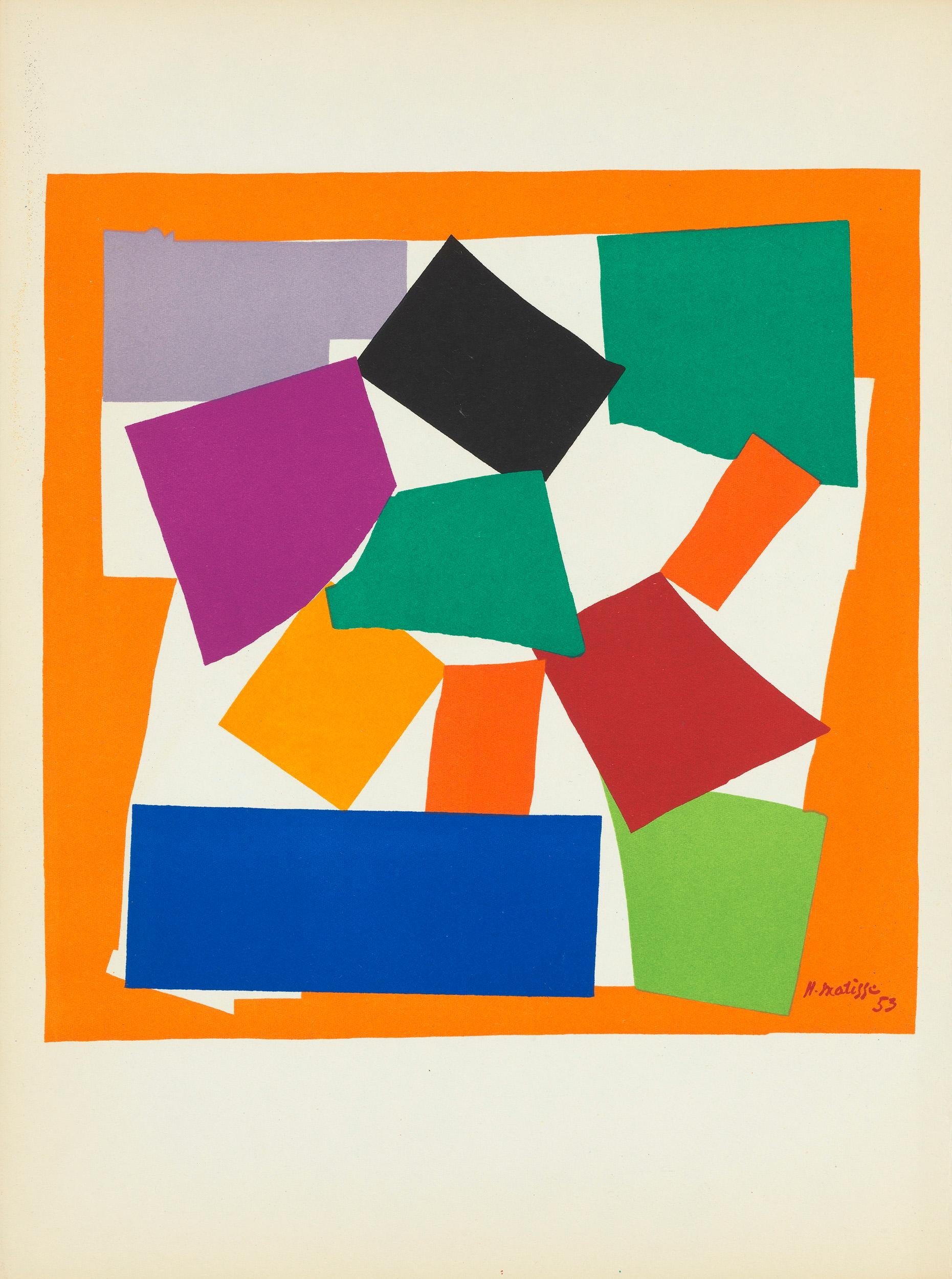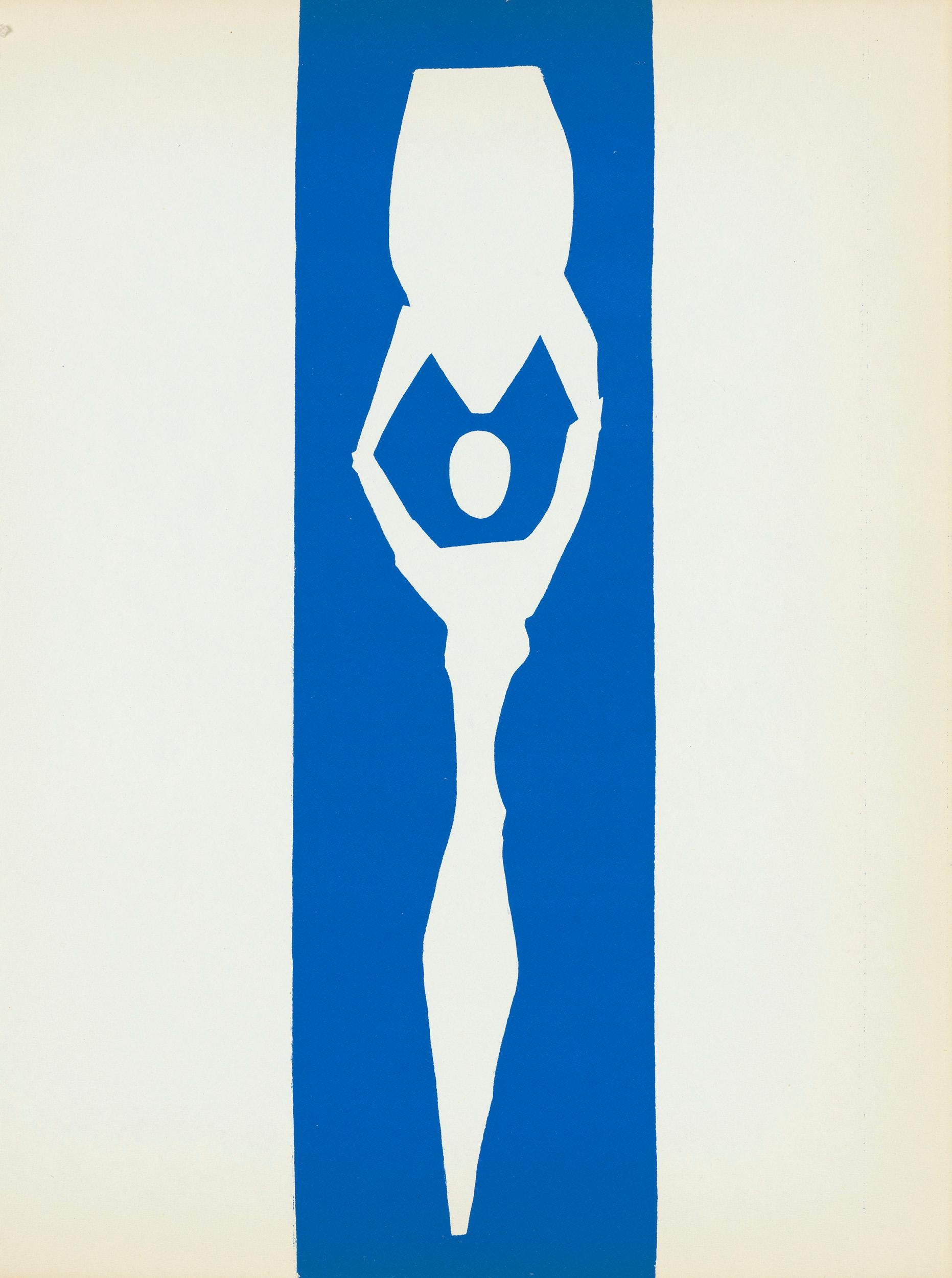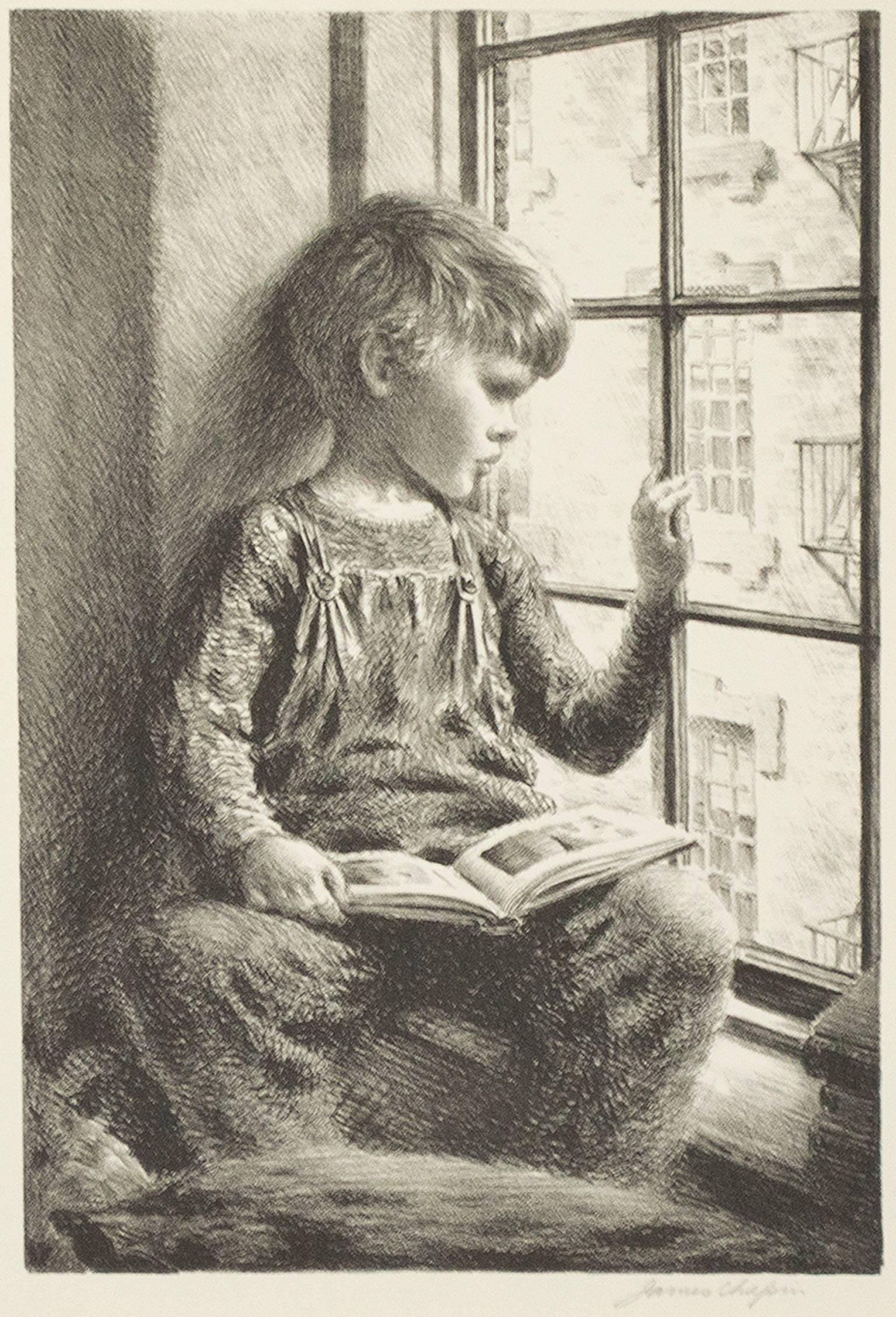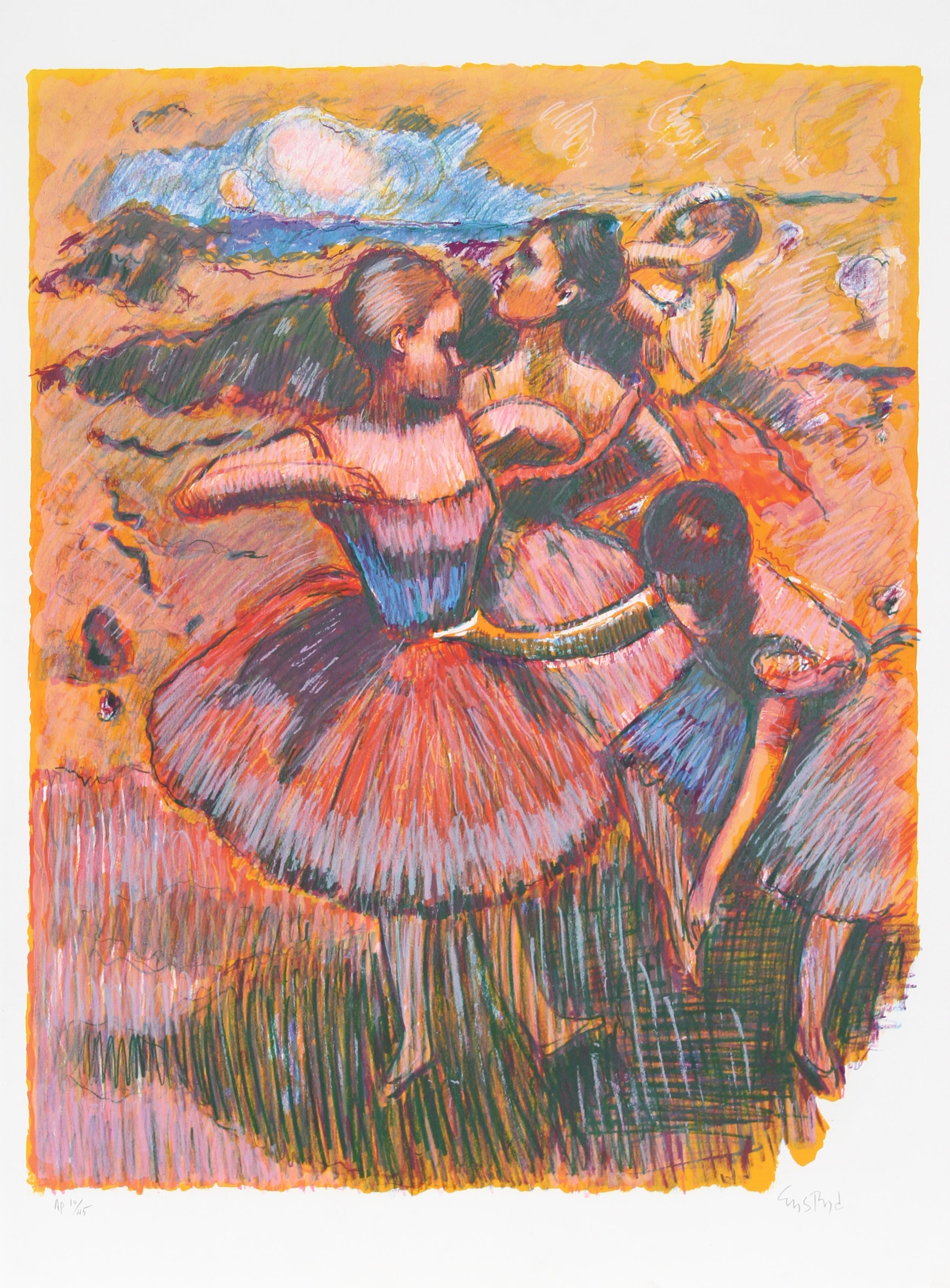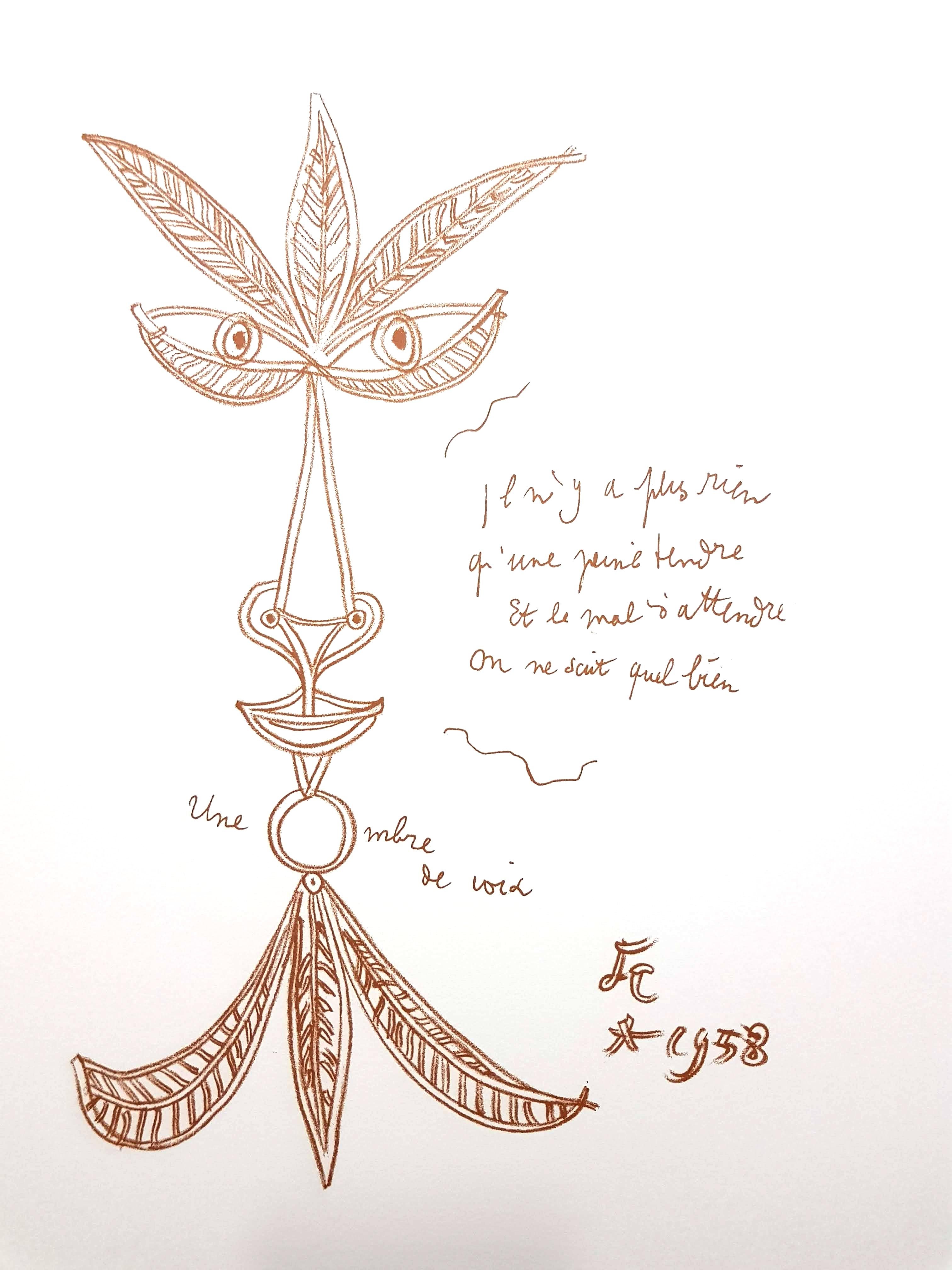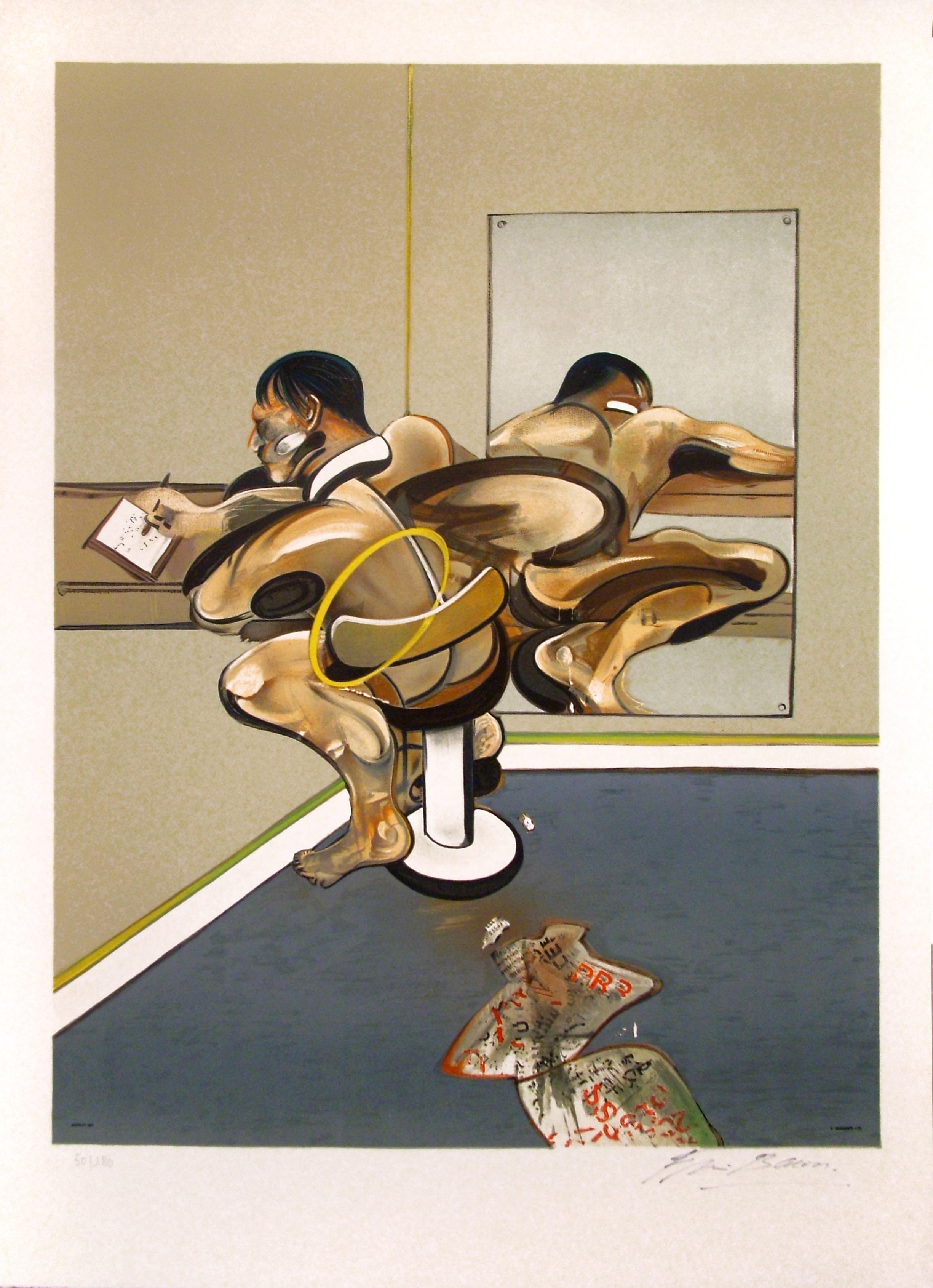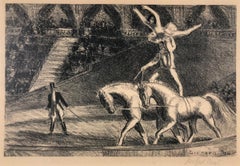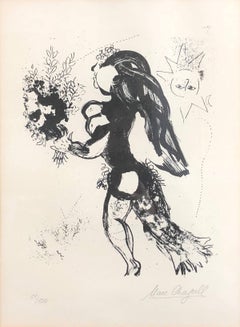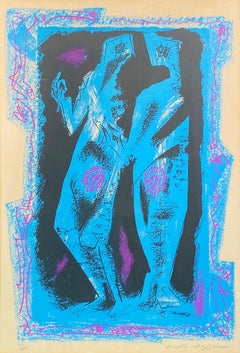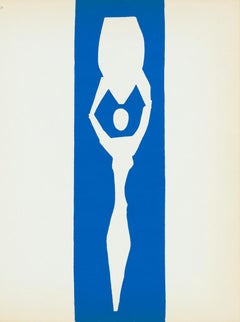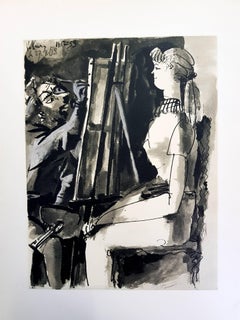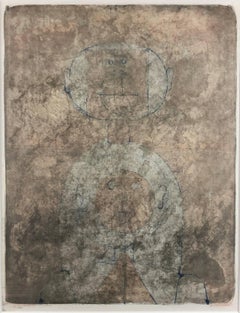
Deux Tetes
View Similar Items
Want more images or videos?
Request additional images or videos from the seller
1 of 6
Rufino TamayoDeux Tetes1969
1969
About the Item
- Creator:Rufino Tamayo (1899-1991, Mexican)
- Creation Year:1969
- Dimensions:Height: 38 in (96.52 cm)Width: 31 in (78.74 cm)
- Medium:
- Movement & Style:
- Period:
- Condition:
- Gallery Location:Missouri, MO
- Reference Number:1stDibs: LU74732318081
About the Seller
5.0
Vetted Seller
These experienced sellers undergo a comprehensive evaluation by our team of in-house experts.
Established in 1970
1stDibs seller since 2017
140 sales on 1stDibs
Typical response time: 21 hours
More From This SellerView All
- Bareback Act, Old HippodromeBy Gifford BealLocated in Missouri, MOBareback Act, Old Hippodrome By Gifford Beal (1879-1956) Signed Lower Right Unframed: 6.5" x 9.5" Framed: 17.5" x 20" Gifford Beal, painter, etcher, muralist, and teacher, was born in New York City in 1879. The son of landscape painter William Reynolds Beal, Gifford Beal began studying at William Merritt Chase's Shinnecock School of Art (the first established school of plein air painting in America) at the age of thirteen, when he accompanied his older brother, Reynolds, to summer classes. He remained a pupil of Chase's for ten years also studying with him in New York City at the artist's private studio in the Tenth Street Studio Building. Later at his father's behest, he attended Princeton University from 1896 to 1900 while still continuing his lessons with Chase. Upon graduation from Princeton he took classes at the Art Students' League, studying with impressionist landscape painter Henry Ward Ranger and Boston academic painter Frank Vincent DuMond. He ended up as President of the Art Students League for fourteen years, "a distinction unsurpassed by any other artist." His student days were spent entirely in this country. "Given the opportunity to visit Paris en route to England in 1908, he chose to avoid it" he stated, "I didn't trust myself with the delightful life in ParisIt all sounded so fascinating and easy and loose." His subjects were predominately American, and it has been said stylistically "his art is completely American." Gifford achieved early recognition in the New York Art World. He became an associate member of the National Academy of Design in 1908 and was elected to full status of academician in 1914. He was known for garden parties, circuses, landscapes, streets, coasts, flowers and marines. This diversity in subject matter created "no typical or characteristic style to his work." Beal's style was highly influenced by Chase and Childe Hassam, a long time friend of the Beal family who used to travel "about the countryside with Beal in a car sketching...Category
20th Century American Modern Animal Prints
MaterialsLithograph
Price Upon Request - L'Offrande (Signed and Numbered)By Marc ChagallLocated in Missouri, MOLithograph on Arches Paper Pencil Signed Lower Right, "Marc Chagall" Numbered Lower Left Ed. 51/100 Published by CH. SORLIER SIte Size: 19 x 12.5 Framed Size: approx 27.5 x 22.5Category
1960s Modern Figurative Prints
MaterialsLithograph
Price Upon Request - Deux PersonnagesBy André MassonLocated in Missouri, MOSigned Lower Right Numbered Lower Left 166/200 Framed Size: 33 x 25 inches Andre Masson was born in Balagne, France on January 4, 1896. He was an engraver, sculptor, stage designer...Category
1960s Modern Figurative Prints
MaterialsLithograph
Price Upon Request - Profil RoseBy André MassonLocated in Missouri, MOSigned Lower Right Numbered 61/200 Sight Size: 27.5 x 21.5 Framed Size: 31.5 x 24.5 Andre Masson was born in Balagne, France on January 4,1896. He was an engraver, sculptor, stage d...Category
1960s Modern Figurative Prints
MaterialsLithograph
Price Upon Request - The DreamBy Will BarnetLocated in Missouri, MOWill Barnet "The Dream" 2002 Color Lithograph on Somerset Velvet White Paper Signed and Titled Ed. 250 Will Barnet, Visionary Artist, Dies at 101 By KEN JOH...Category
Early 2000s Modern Figurative Prints
MaterialsLithograph
Price Upon Request - Le Christ a l'Horloge, ParisBy Marc ChagallLocated in Missouri, MOMarc Chagall "Le Christ a l'Horloge, Paris" (Christ in the Clock) 1957 (M. 196) Color Lithograph on Arches Wove Paper Signed in Pencil "Marc Chagall" Lower Right Initialed "H.C." (Hors Commerce) Lower Left, aside from numbered edition of 90 *Floated in Gold Frame with Linen Matting, UV Plexiglass Sheet Size: 18 3/4 x 14 3/4 inches (47.5 cm x 38 cm) Image Size: 9 3/4 x 8 1/2 inches Framed Size: 28.5 x 24.25 inches Marc Chagall was a man of keen intelligence, a shrewd observer of the contemporary scene, with a great sympathy for human suffering. He was born on July 7, 1887 in Vitebsk, Russia; his original name was Moishe Shagal (Segal), but when he became a foremost member of the Ecole de Paris, he adopted French citizenship and the French spelling of his name. Vitebsk was a good-sized Russian town of over 60,000, not a shtetl. His father supported a wife and eight children as a worker in a herring-pickling plant. Sheltered by the Jewish commandment against graven images, the young Chagall never saw so much as a drawing until, one day, he watched a schoolmate copying a magazine illustration. He was ridiculed for his astonishment, but he began copying and improvising from magazines. Both Chagall's parents reluctantly agreed to let him study with Yehuda Pen, a Jewish artist in Vitebsk. Later, in 1906, they allowed their son to study in St. Petersburg, where he was exposed to Russian Iconography and folk art. At that time, Jews could leave the Pale only for business and employment and were required to carry a permit. Chagall, who was in St. Petersburg without a permit, was imprisoned briefly. His first wife, Bella Rosenfeld, was a product of a rich cultivated and intellectual group of Jews in Vitebsk. Chagall was made commissar for the arts for the area, charged with directing its cultural life and establishing an art school. Russian folklore, peasant life and landscapes persisted in his work all his life. In 1910 a rich patron, a lawyer named Vinaver, staked him to a crucial trip to Paris, where young artists were revolutionizing art. He also sent him a handsome allowance of 125 francs (in those days about $24) each month. Chagall rejected cubism, fauvism and futurism, but remained in Paris. He found a studio near Montparnasse in a famous twelve-sided wooden structure divided into wedge-shaped rooms. Chaim Soutine, a fellow Russian Jew, and Modigliani lived on the same floor. To Chagall's astonishment, he found himself heralded as one of the fathers of surrealism. In 1923, a delegation of Max Ernst, Paul Eluard and Gala (later Salvador Dali's wife) actually knelt before Chagall, begging him to join their ranks. He refused. To understand Chagall's work, it is necessary to know that he was born a Hasidic Jew, heir to mysticism and a world of the spirit, steeped in Jewish lore and reared in the Yiddish language. The Hasidim had a special feeling for animals, which they tried not to overburden. In the mysterious world of Kabbala and fantastic ancient legends of Chagall's youth, the imaginary was as important as the real. His extraordinary use of color also grew out of his dream world; he did not use color realistically, but for emotional effect and to serve the needs of his design. Most of his favorite themes, though superficially light and trivial, mask dark and somber thoughts. The circus he views as a mirror of life; the crucifixion as a tragic theme, used as a parallel to the historic Jewish condition, but he is perhaps best known for the rapturous lovers he painted all his life. His love of music is a theme that runs through his paintings. After a brief period in Berlin, Chagall, Bella and their young daughter, Ida, moved to Paris and in 1937 they assumed French citizenship. When France fell, Chagall accepted an invitation from the Museum of Modern Art to immigrate to the United States. He was arrested and imprisoned in Marseilles for a short time, but was still able to immigrate with his family. The Nazi onslaught caught Chagall in Vichy, France, preoccupied with his work. He was loath to leave; his friend Varian Fry rescued him from a police roundup of Jews in Marseille, and packed him, his family and 3500 lbs. of his art works on board a transatlantic ship. The day before he arrived in New York City, June 23, 1941, the Nazis attacked Russia. The United States provided a wartime haven and a climate of liberty for Chagall. In America he spent the war years designing large backdrops for the Ballet. Bella died suddenly in the United States of a viral infection in September 1944 while summering in upstate New York. He rushed her to a hospital in the Adirondacks, where, hampered by his fragmentary English, they were turned away with the excuse that the hour was too late. The next day she died. He waited for three years after the war before returning to France. With him went a slender married English girl, Virginia Haggard MacNeil; Chagall fell in love with her and they had a son, David. After seven years she ran off with an indigent photographer. It was an immense blow to Chagall's ego, but soon after, he met Valentine Brodsky, a Russian divorcee designing millinery in London (he called her Fava). She cared for him during the days of his immense fame and glory. They returned to France, to a home and studio in rustic Vence. Chagall loved the country and every day walked through the orchards, terraces, etc. before he went to work. Chagall died on March 28, 1985 in the south of France. His heirs negotiated an arrangement with the French state allowing them to pay most of their inheritance taxes in works of art. The heirs owed about $30 million to the French government; roughly $23 million of that amount was deemed payable in artworks. Chagall's daughter, Ida and his widow approved the arrangement. Written and submitted by Jean Ershler Schatz, artist and researcher from Laguna Woods, California. Sources: Hannah Grad Goodman in Homage to Chagall in Hadassah Magazine, June 1985 Jack Kroll in Newsweek, April 8, 1985 Andrea Jolles in National Jewish Monthly Magazine, May 1985 Michael Gibson...Category
1950s Modern Figurative Prints
MaterialsLithograph
Price Upon Request
You May Also Like
- L'escargotBy Henri MatisseLocated in London, GBLithograph in colours based on the cut-out of the same title, 1952 From 'Verve' Magazine Volume IX, Nos 35 & 36: 'Dernières Oeuvres de Matisse 1950-54' Pr...Category
1950s Modern Figurative Prints
MaterialsLithograph
- Nu Bleu IIBy Henri MatisseLocated in London, GBLithograph in colours based on the cut-out of the same title, 1952 From 'Verve' Magazine Volume IX, Nos 35 & 36: 'Dernières Oeuvres de Matisse 1950-54' Pr...Category
1950s Modern Figurative Prints
MaterialsLithograph
- The Human Comedy - LithographBy (after) Pablo PicassoLocated in Collonge Bellerive, Geneve, CHAfter Pablo Picasso The Human Comedy - Lithograph after an original drawing, as published in the journal "Verve" Printed signature and date Dimensi...Category
1950s Modern Figurative Prints
MaterialsLithograph
$914 Sale Price35% Off - "Mother"By Raphael SoyerLocated in Southampton, NYSigned in pencil lower right AP (artist proof)lower left Sight size 18 x 12 in Overall size in museum quality matted frame 30 x 23 in Same lithograph is in permanent collection of th...Category
Mid-20th Century Modern Figurative Prints
MaterialsLithograph
$1,250 Sale Price43% Off - Musicians Troupe - Handsigned lithograph /75 exBy Walter SpitzerLocated in Paris, FRWalter SPITZER (1927-) Musicians Troupe Original lithograph Handsigned in pencil Numbered /75 ex On Japan paper 61 x 90 cm (c. 24 x 36 inch) Excellent conditionCategory
Late 20th Century Modern Figurative Prints
MaterialsLithograph
- Lovers in a Carriage - Handsigned lithograph /75 exBy Walter SpitzerLocated in Paris, FRWalter SPITZER (1927-) Lovers in a Carriage Original lithograph Handsigned in pencil Numbered /75 ex On Japan paper 65 x 48 cm (c. 26 x 19 inch) Excellent conditionCategory
Late 20th Century Modern Figurative Prints
MaterialsLithograph
